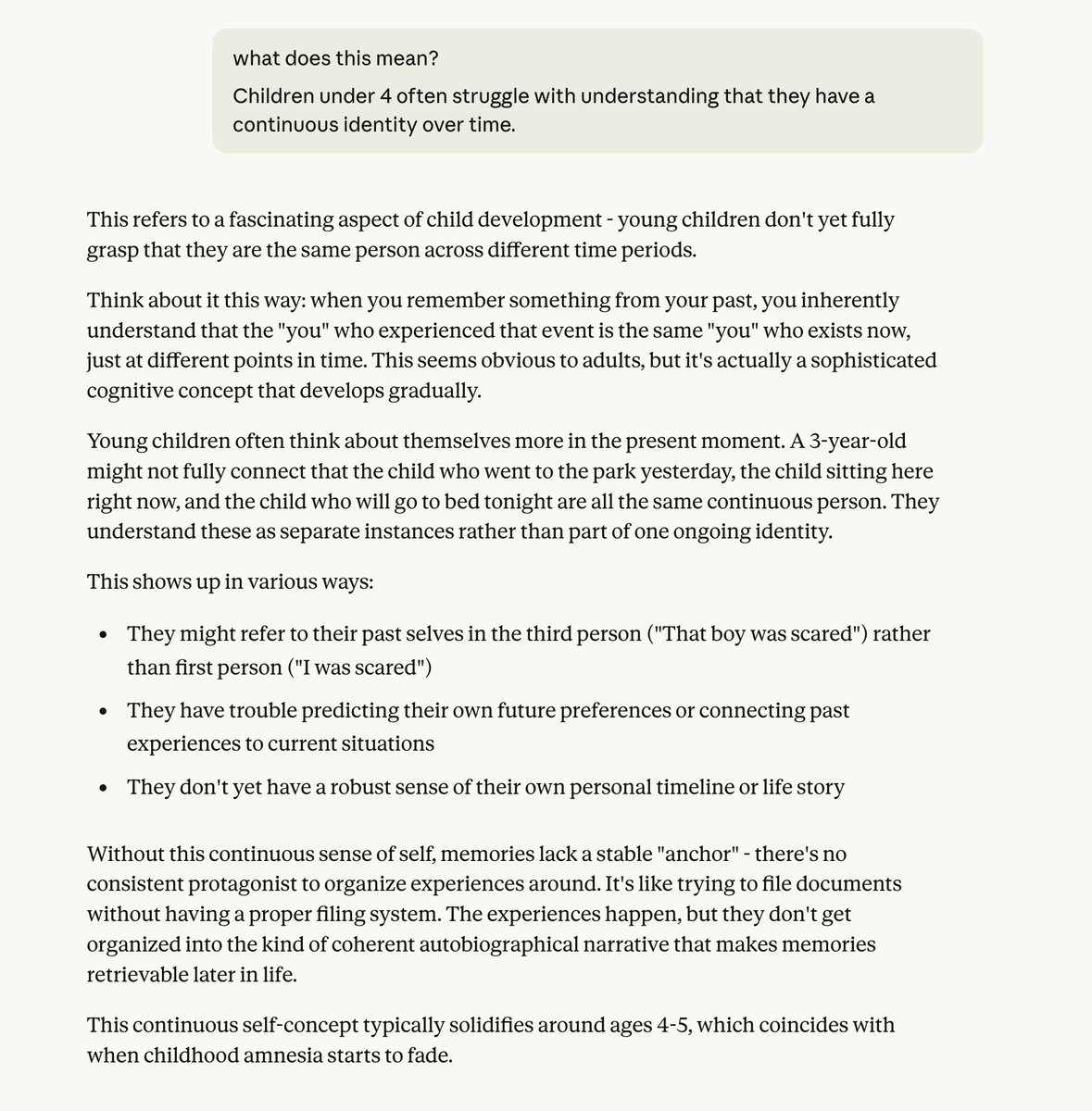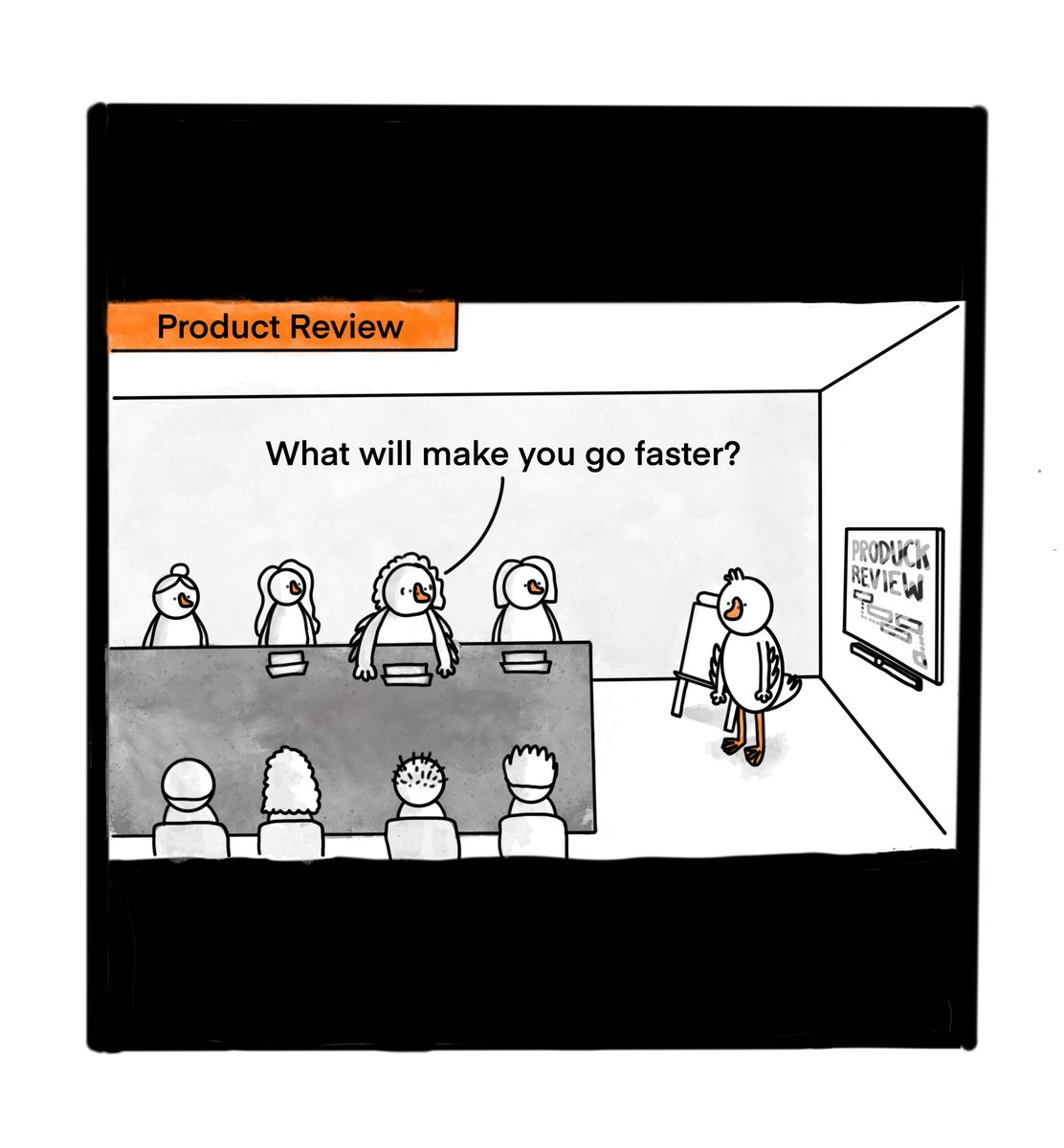Add these 10 biases to your product team's shared vocabulary
1–Confirmation Bias
2–Fundamental Attribution Error
3–Availability Heuristic
4–Plan Continuation Bias
5–Law of Triviality
6–Curse of Knowledge
7–Law of the Instrument
8–OutcomeBias
9–Bandwagon Effect
10–Bias Blind Spot
1–Confirmation Bias
2–Fundamental Attribution Error
3–Availability Heuristic
4–Plan Continuation Bias
5–Law of Triviality
6–Curse of Knowledge
7–Law of the Instrument
8–OutcomeBias
9–Bandwagon Effect
10–Bias Blind Spot
The benefits of deeply understanding these biases & creating psychological safety for surfacing them:
- Better product decisions
- Better execution
- Happier teams
Learn more about them here:
en.wikipedia.org/wiki/List_of_c…
- Better product decisions
- Better execution
- Happier teams
Learn more about them here:
en.wikipedia.org/wiki/List_of_c…
Descriptions, along with product team-specific examples of each of these biases👇🏾
1—Confirmation Bias
Interpret info/data that confirms one's preconceptions
Examples.
experiment results positive?
“yay, ship it!”
results negative?
“must be something wrong with our bucketing & analysis”
user says they need X
is X in the roadmap? yes
“we have user validation”
Interpret info/data that confirms one's preconceptions
Examples.
experiment results positive?
“yay, ship it!”
results negative?
“must be something wrong with our bucketing & analysis”
user says they need X
is X in the roadmap? yes
“we have user validation”
2—Fundamental Attribution Error
Attribute people’s behaviors to their character & justify one’s own behaviors with the situation & context
Example.
Bob: “Alice just doesnt care about users”
Also Bob: “my team's feature was buggy becos we were understaffed & under time pressure”
Attribute people’s behaviors to their character & justify one’s own behaviors with the situation & context
Example.
Bob: “Alice just doesnt care about users”
Also Bob: “my team's feature was buggy becos we were understaffed & under time pressure”
3—Availability Heuristic
Evaluate & decide based on data or anecdotes that can be readily recalled right now
Example.
PM: So we can do A or B. Neither option is perfect, will need to pick one
Exec: I was talking to Acme Inc last week—they’d love B & dislike A. Let’s do B
PM:👌🏾
Evaluate & decide based on data or anecdotes that can be readily recalled right now
Example.
PM: So we can do A or B. Neither option is perfect, will need to pick one
Exec: I was talking to Acme Inc last week—they’d love B & dislike A. Let’s do B
PM:👌🏾
4–Plan Continuation Bias
Unwillingness to change current plan despite new information or conditions.
Example.
PM: Apple’s launch has really changed the landscape.
Eng Mgr: We’ve already spent 6 months building this feature. I’m not going to tell my team to change course now.
Unwillingness to change current plan despite new information or conditions.
Example.
PM: Apple’s launch has really changed the landscape.
Eng Mgr: We’ve already spent 6 months building this feature. I’m not going to tell my team to change course now.
5–Law of Triviality
Giving disproportionate attention to trivial issues (while ignoring big ones)
Examples.
PM Director: Product X is late by 3 weeks
Exec: I want a full report on this
Designer: Should we fix this border?
PM: Leave it in so execs can give that feedback to us
Giving disproportionate attention to trivial issues (while ignoring big ones)
Examples.
PM Director: Product X is late by 3 weeks
Exec: I want a full report on this
Designer: Should we fix this border?
PM: Leave it in so execs can give that feedback to us
6–The Curse of Knowledge
People assume that others have the same knowledge & expertise as them
Example.
PM Director: "I just wish our teams would prioritize smarter & use common sense"
The said teams: "we don’t understand what these goals & activity are all adding up to"
People assume that others have the same knowledge & expertise as them
Example.
PM Director: "I just wish our teams would prioritize smarter & use common sense"
The said teams: "we don’t understand what these goals & activity are all adding up to"
7–Law of the Instrument
If all you have is a hammer, everything looks like a nail
Examples.
Eng Mgr: we followed the standard process, it isn't our fault that there were PR issues
PM: we launched feature X with similar uplift, so we must launch feature Y too for consistency
If all you have is a hammer, everything looks like a nail
Examples.
Eng Mgr: we followed the standard process, it isn't our fault that there were PR issues
PM: we launched feature X with similar uplift, so we must launch feature Y too for consistency
8–Outcome Bias
Judging the quality of a decision or quality of work by its outcome
Examples.
Eng Mgr: we’ve never done pre-mortems & things have turned out fine. I don’t see the need for one
Promo committee: revenue is through the roof, we should promote Bob despite the snags
Judging the quality of a decision or quality of work by its outcome
Examples.
Eng Mgr: we’ve never done pre-mortems & things have turned out fine. I don’t see the need for one
Promo committee: revenue is through the roof, we should promote Bob despite the snags
9–Bandwagon Effect
Conforming with the majority's beliefs, customs, behaviors
Example.
PM Dir: "I didn't agree with the CEO's decision but I could tell from the body language in that meeting that I was the only one, so it didn't make sense for me to push back"
Eng Dir: "Me too"
Conforming with the majority's beliefs, customs, behaviors
Example.
PM Dir: "I didn't agree with the CEO's decision but I could tell from the body language in that meeting that I was the only one, so it didn't make sense for me to push back"
Eng Dir: "Me too"
10–Bias Blind Spot
Seeing oneself as less biased than others
Example.
Carol (PM): "that team should have nixed their project much earlier. fell prey to sunk cost fallacy"
Also Carol: "progress is slow, but we need to continue investing here so we can see results next year"
Seeing oneself as less biased than others
Example.
Carol (PM): "that team should have nixed their project much earlier. fell prey to sunk cost fallacy"
Also Carol: "progress is slow, but we need to continue investing here so we can see results next year"
Back to the top of this thread
https://twitter.com/shreyas/status/1330711544309579777
Which of these biases do I personally suffer from?
All of them.
Most notably:
Confirmation Bias (almost daily)
Availability Heuristic (almost weekly)
Fundamental Attribution Error (at least once a month)
Curse of Knowledge (5 yrs ago, almost daily)
Bias Blind Spot (not sure)
All of them.
Most notably:
Confirmation Bias (almost daily)
Availability Heuristic (almost weekly)
Fundamental Attribution Error (at least once a month)
Curse of Knowledge (5 yrs ago, almost daily)
Bias Blind Spot (not sure)
Dealing with these biases is a bit like meditation.
Goal of meditation isn't to stop all thought.
It's to observe that thinking is happening.
Similarly, we can't stop biased thinking.
But by understanding them well & giving them names, we can observe biases when they appear.
Goal of meditation isn't to stop all thought.
It's to observe that thinking is happening.
Similarly, we can't stop biased thinking.
But by understanding them well & giving them names, we can observe biases when they appear.
Related resources👇🏾
This thread was about biases that affect our decision-making as a product person or a product team.
Here are the biases that your users & customers are likely to have—understand these biases so you can build better products for them:
Here are the biases that your users & customers are likely to have—understand these biases so you can build better products for them:
https://twitter.com/shreyas/status/1331655302341484544
A mega-thread / crash course on the 7 team cognitive biases that lead to unsuccessful products
https://twitter.com/shreyas/status/1309708343963865088
• • •
Missing some Tweet in this thread? You can try to
force a refresh














